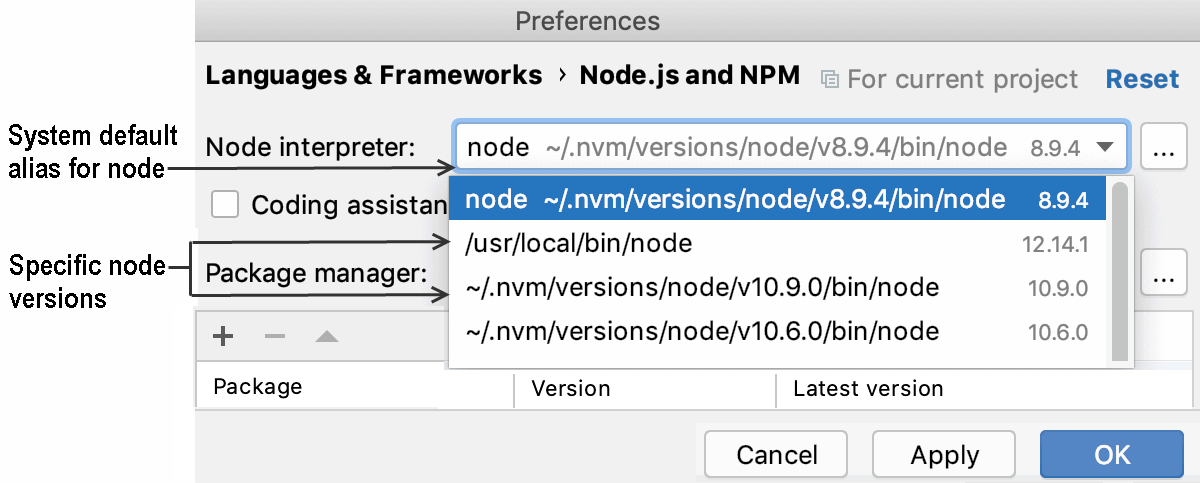Languages and frameworks: Node.js
Node.js is a lightweight runtime environment for executing JavaScript outside the browser, for example on the server or in the command line. JetBrains Rider integrates with Node.js providing assistance in configuring, editing, running, debugging, testing, profiling, and maintaining your applications.
If you need Node.js only as a local runtime for your application or for managing npm packages, running JavaScript linters, build tools, test frameworks, and so on, just install Node.js. If you follow the standard installation procedure, in most cases JetBrains Rider detects Node.js itself.
If you want to switch among several Node.js installations, they must be configured as local Node.js interpreters. In most cases, JetBrains Rider detects Node.js installations, configures them as interpreters automatically, and adds them to the list where you can select the relevant one.
To run a Node.js application remotely, configure it as a remote interpreter. See Node.js with Docker, Node.js via SSH, and Node.js with Vagrant for details.
Switching between Node.js versions
With JetBrains Rider, you can have several installations of Node.js and switch between them while working on the same project.
Press Ctrl+Alt+S to open the IDE settings and select .
On the Node.js page that opens, select the required Node.js installation from the Node Interpreter list.
If you followed the standard installation procedure, in most cases the required Node.js installation is on the list. If the installation is missing, click
and configure it as a local interpreter manually.
Using a system Node.js version
With JetBrains Rider, you can set the default system node alias as your project’s Node.js version. After that this version will be automatically used by all the tools that require Node.js and in all new run/debug configurations. In particular, this means that you will not have to update the settings for each tool if you install a new Node.js version and make it the default node alias in your system.
Press Ctrl+Alt+S to open the IDE settings and select .
From the Node interpreter list, select node.

Specify this new Node.js interpreter where applicable, for example in your run/debug configurations or settings of specific tools.
Configuring a local Node.js interpreter
You may need to configure Node.js installation as an interpreter manually, for example, if Node.js is installed in a non-default location so JetBrains Rider does not detect it automatically.
Press Ctrl+Alt+S to open the IDE settings and select .
Click
next to the Node Interpreter list.
In the Node.js Interpreters dialog with a list of all the currently configured interpreters, click
on the toolbar and select Add Local from the context menu and choose the installation of Node.js, then click OK. You return to the Node.js Interpreters dialog where the Node interpreter read-only field shows the path to the new interpreter.
In the Package manager field, choose the package manager (npm, Yarn, or pnpm) for the current project.
See Configuring a package manager for a project for details.
When you click OK, you return to the Node.js page where the Node interpreter field shows the new interpreter.